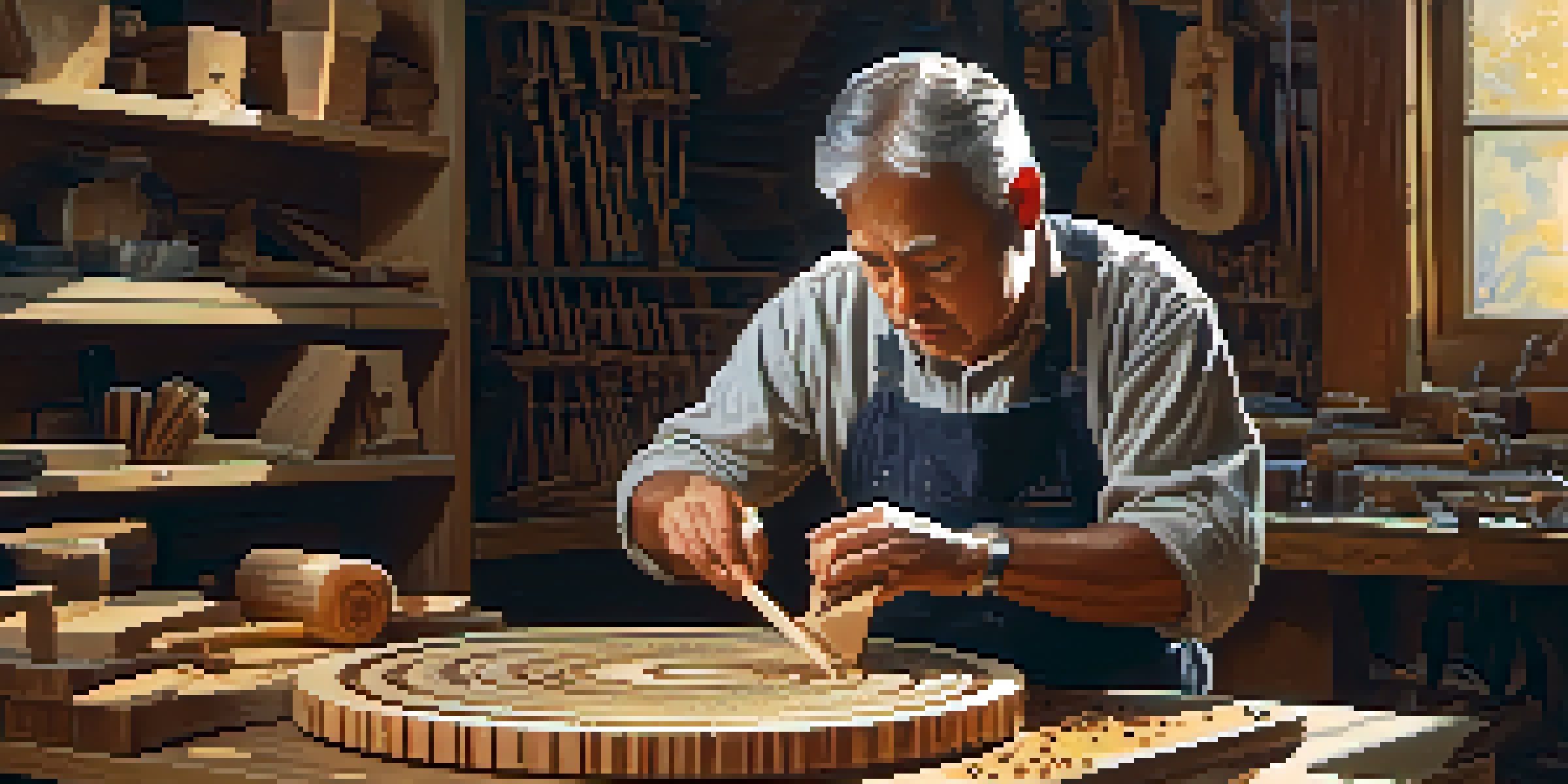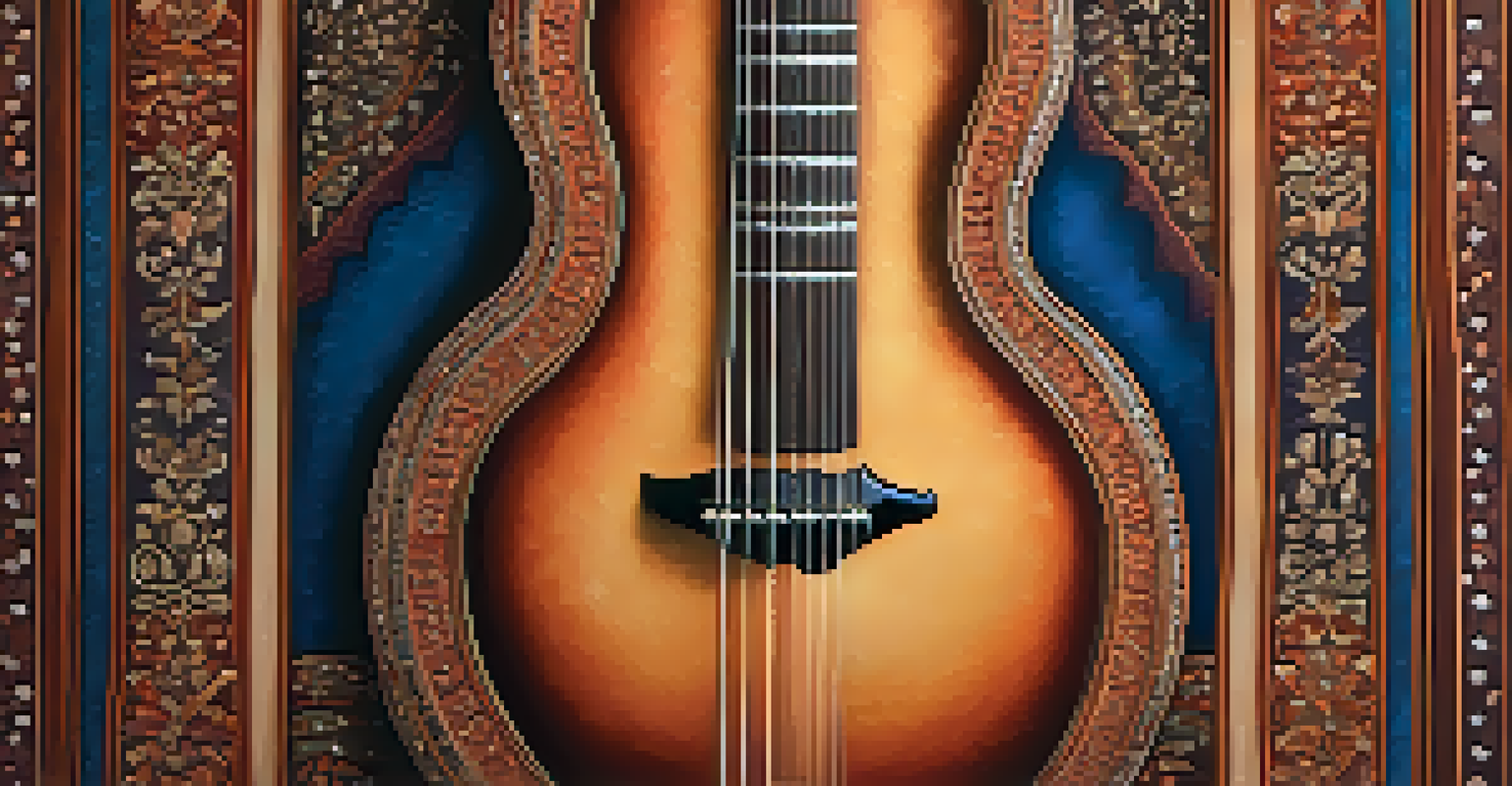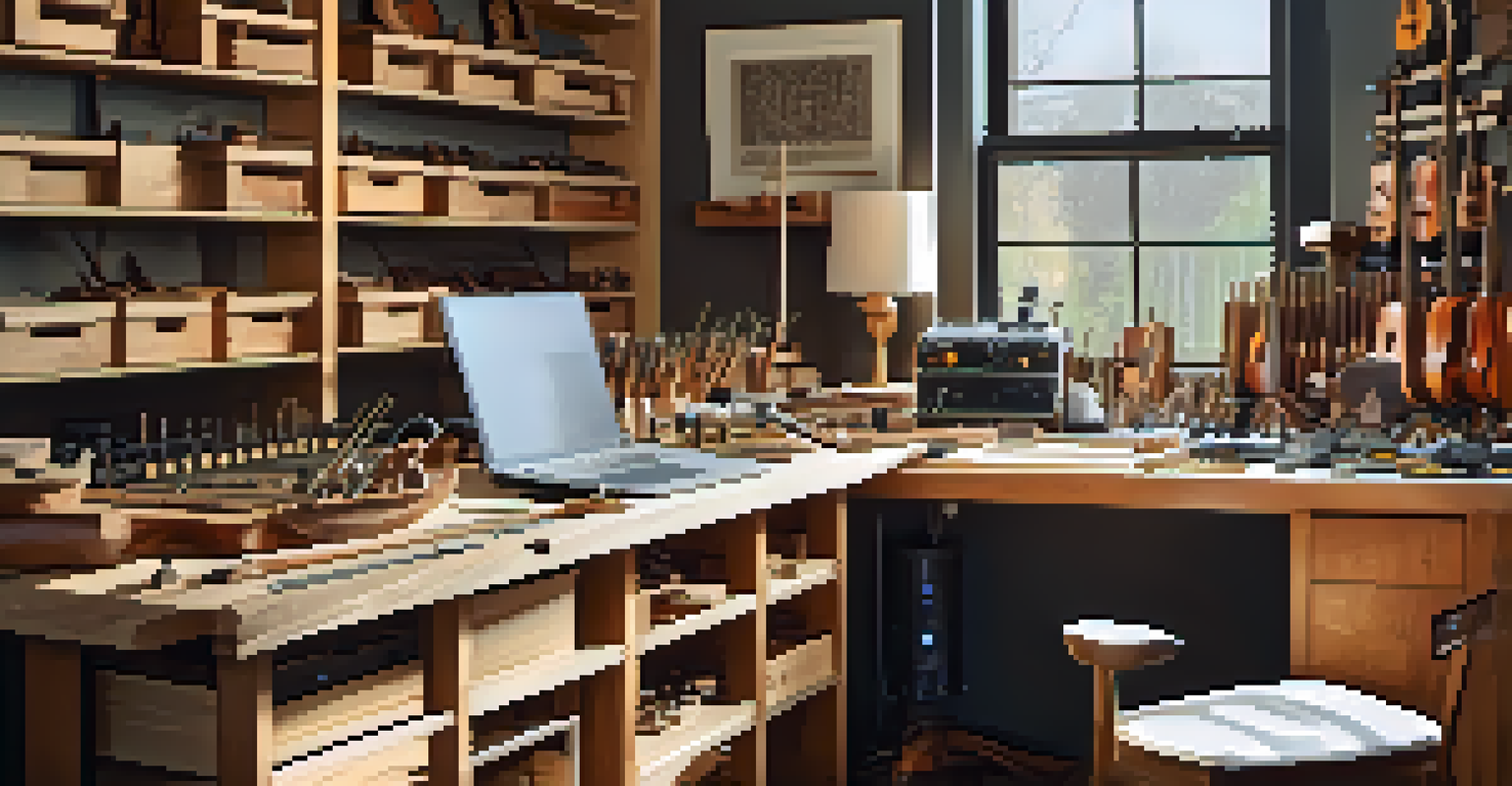The Craft of Carving: History of Musical Instrument Artistry

The Origins of Musical Instrument Carving
The art of carving musical instruments dates back thousands of years, with early examples found in ancient civilizations. Instruments like flutes carved from bone and wooden drums demonstrate how humans have always sought to create music. This passion for sound led artisans to explore various materials and techniques, ensuring each instrument had a unique voice.
Music can change the world because it can change people.
In many cultures, the crafting of musical instruments was not just a skill but a sacred tradition. For instance, in Africa, the making of drums is often accompanied by rituals that honor the spirits of ancestors. This connection to heritage enriches the artistry, blending music with storytelling and cultural identity.
As civilizations evolved, so did the complexity of instrument carving. The transition from simple tools to more sophisticated carving techniques allowed artisans to create more intricate designs, enhancing both beauty and sound quality. This evolution set the stage for a vibrant musical landscape that continues to thrive today.
Materials Used in Instrument Carving
The choice of materials is crucial in the art of carving musical instruments. Wood, for example, is favored for its resonance and warmth, with different types such as maple, mahogany, and spruce offering distinct tonal qualities. Each species has its own characteristics, influencing the sound produced, making the selection process vital for luthiers and instrument makers.

In addition to wood, artisans have experimented with materials like ivory, metal, and even synthetic compounds. While ivory was once a popular choice for fine detailing, ethical considerations have led to a shift toward sustainable options. This evolution reflects a growing awareness of environmental impact while still prioritizing sound quality and craftsmanship.
Tradition Meets Innovation in Crafting
Artisans blend age-old techniques with modern designs, ensuring musical instruments evolve while honoring their historical roots.
The blend of traditional and modern materials allows for unique expressions in instrument design. For example, using carbon fiber alongside wood can enhance durability without sacrificing tonal richness. This innovation showcases how the craft of carving continues to adapt while honoring its historical roots.
The Role of Tradition in Craftsmanship
Tradition plays a significant role in the craftsmanship of musical instruments. Many artisans adhere to age-old techniques passed down through generations, preserving the essence of their cultural heritage. This respect for tradition fosters a sense of continuity and authenticity in the instruments they create.
The beauty of music is that it connects people. It connects them to one another and to the world around them.
However, tradition does not mean stagnation; rather, it serves as a foundation for innovation. For instance, some modern luthiers incorporate traditional methods while experimenting with new designs and technologies. This blend of the old and the new enriches the craft, allowing it to evolve while still honoring its origins.
By embedding tradition into their practice, craftsmen create instruments that resonate with both history and contemporary audiences. Each piece tells a story—not just through its sound, but through the methods and materials used in its creation. This connection to tradition enhances the emotional experience of music-making.
Notable Carving Techniques and Styles
Musical instrument carving encompasses a variety of techniques and styles that reflect the artisan's creativity. Techniques such as relief carving, where designs are raised from the surface, can add depth and texture to instruments. These intricate details not only enhance aesthetics but also contribute to the instrument's overall sound.
Another fascinating style is the use of inlay, where contrasting materials are embedded into the wood to create stunning visuals. This technique often features intricate designs that tell stories or symbolize cultural motifs, transforming the instrument into a work of art. The combination of craftsmanship and artistry elevates the instrument's value and appeal.
Materials Shape Unique Sound Quality
The choice of materials, from wood to sustainable options, significantly influences the tonal qualities and craftsmanship of carved instruments.
As artisans explore new methods, the lines between traditional and contemporary styles blur. This evolution allows for a diverse range of instruments that cater to various musical genres and personal tastes. Each carved piece becomes a unique expression of the musician's identity and the artisan's skill.
Cultural Influences on Instrument Carving
Cultural influences significantly shape the craft of instrument carving around the world. Each region boasts its own unique styles, materials, and techniques, reflecting local customs and musical traditions. For example, the intricate carvings found on Indian sitars showcase the country's rich artistic heritage and deep-rooted connection to spirituality.
Similarly, the craftsmanship of African drums often incorporates symbols and patterns that convey cultural narratives. These designs serve not only as decoration but also as a means of communication, linking the music to its cultural context. This interplay between music and culture creates a rich tapestry of sound and artistry.
As global communication increases, the blending of cultural influences can be seen in modern instrument carving. Artisans are now inspired by diverse traditions, leading to innovative designs that celebrate both local heritage and global creativity. This fusion enriches the musical landscape and fosters a greater appreciation for the craft.
The Future of Musical Instrument Carving
The future of musical instrument carving is both exciting and promising. As technology advances, artisans are discovering new tools and materials that enhance their craft while maintaining traditional values. For instance, 3D printing is emerging as a method for creating prototypes, allowing for greater experimentation and precision.
Sustainability is also becoming a focal point for instrument makers. With environmental concerns at the forefront, many artisans are adopting eco-friendly practices and sourcing sustainable materials. This shift not only protects natural resources but also resonates with a growing consumer base that values ethical craftsmanship.
Cultural Influences Enhance Artistry
Local customs and musical traditions play a vital role in shaping the styles and techniques of instrument carving across different cultures.
Ultimately, the future of carving musical instruments lies in balancing innovation with tradition. By embracing new technologies while honoring age-old techniques, artisans can continue to create beautiful, high-quality instruments that inspire musicians for generations to come. This harmonious blend ensures that the craft of carving remains vibrant and relevant.
The Impact of Carved Instruments on Music
Carved musical instruments have a profound impact on the music we hear today. The craftsmanship that goes into each piece directly influences sound quality, playability, and overall musical expression. Musicians often cite the unique character of handcrafted instruments as integral to their personal sound.
Moreover, the artistry of carved instruments can inspire musicians in ways that mass-produced alternatives cannot. The intricate designs and personalized touches evoke a sense of connection and authenticity, encouraging musicians to explore new creative avenues. This relationship between instrument and musician enhances the overall experience of music-making.

As we celebrate the artistry behind carved instruments, it's essential to recognize their role in shaping musical cultures around the world. From folk traditions to contemporary genres, these instruments carry stories and emotions, weaving a rich auditory tapestry. The impact of this artistry is felt not just in notes played, but in the very essence of musical expression.